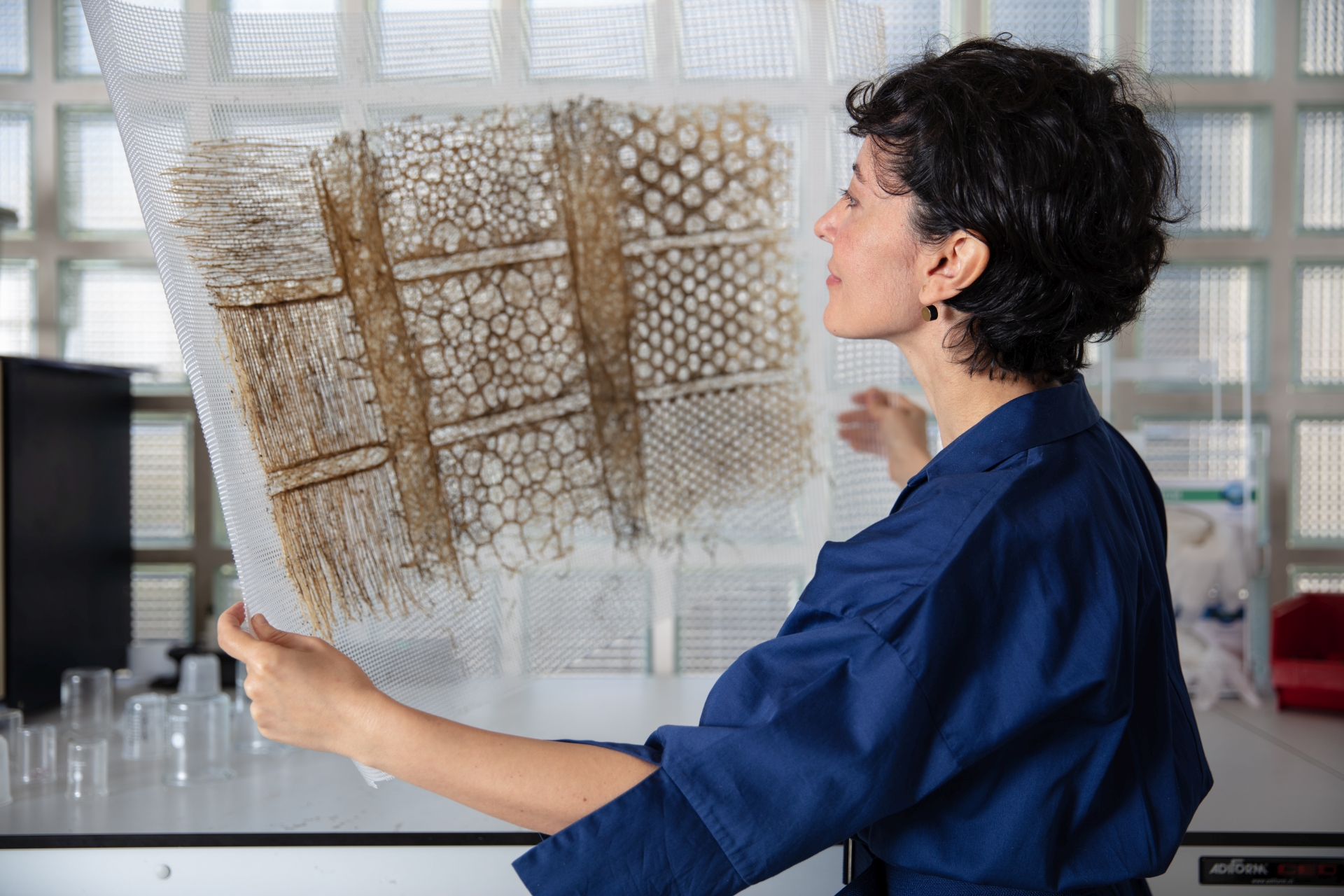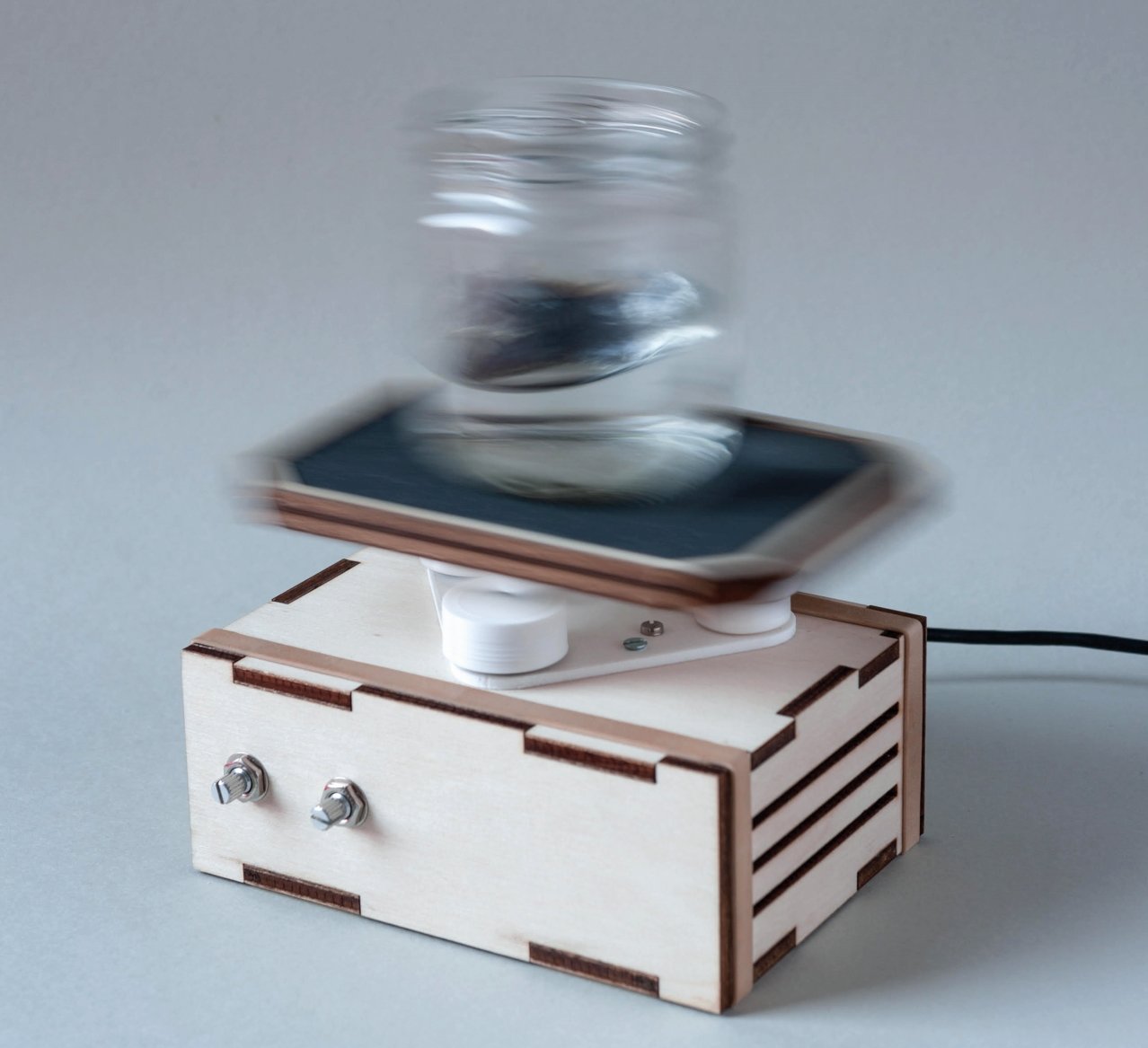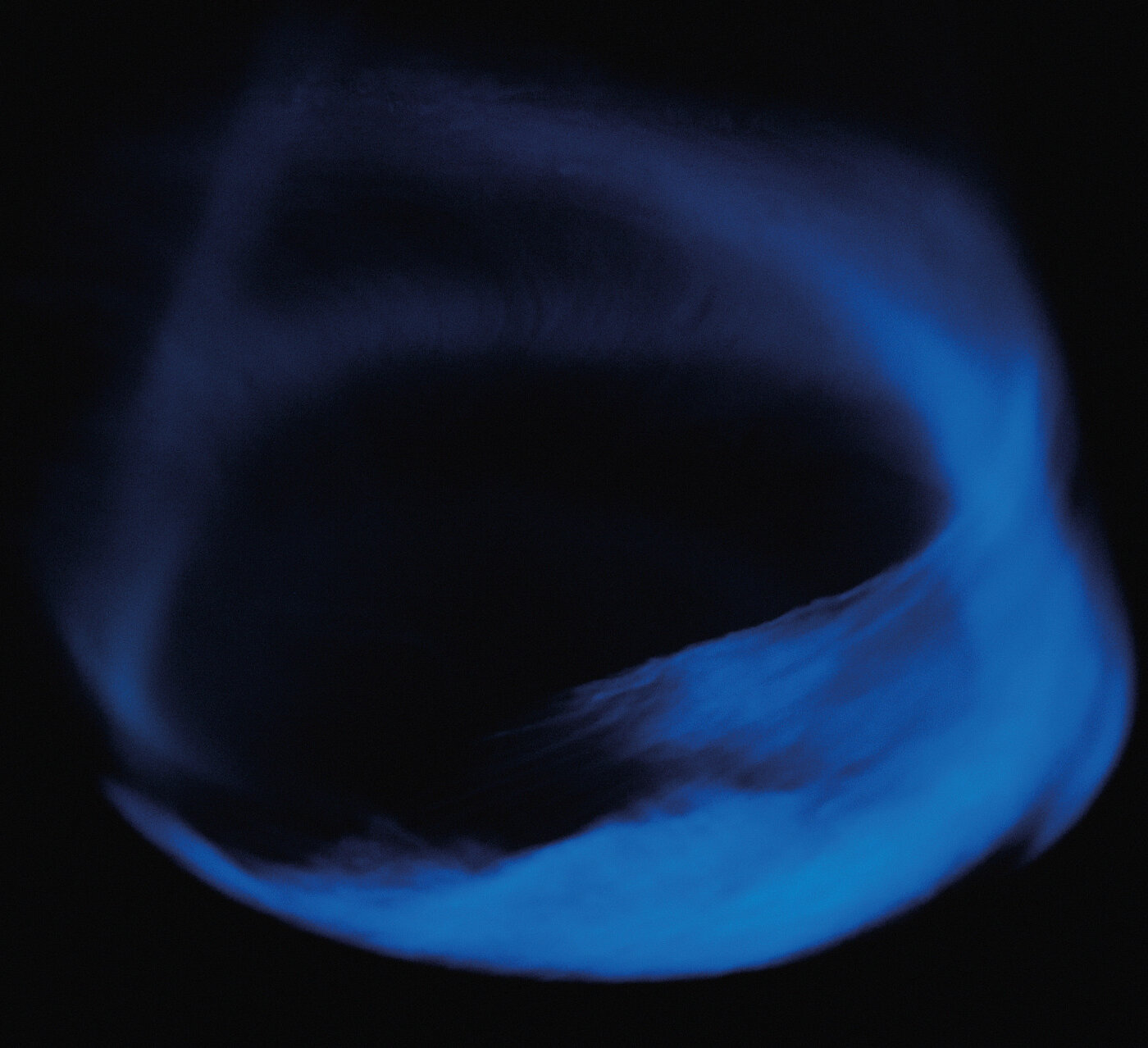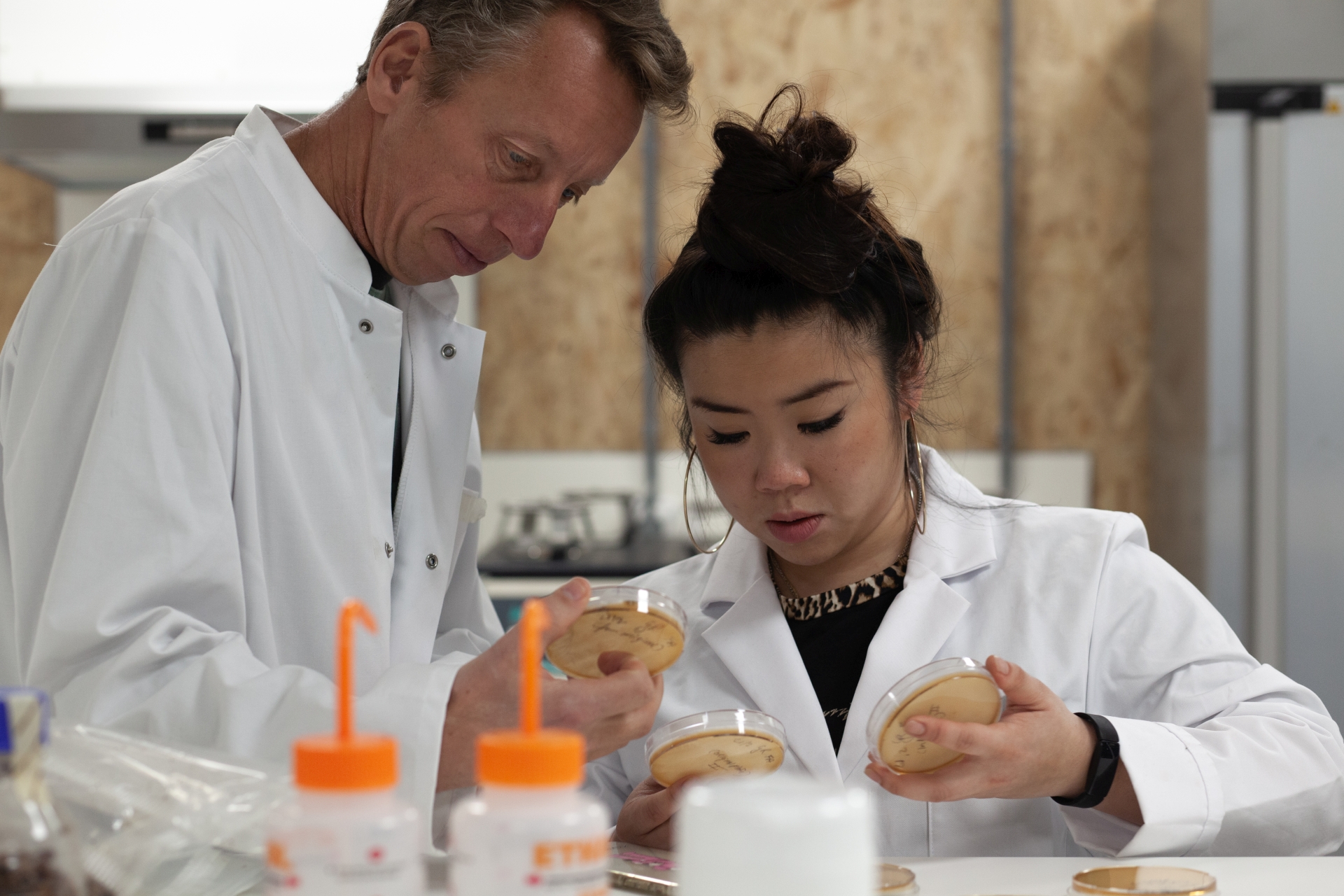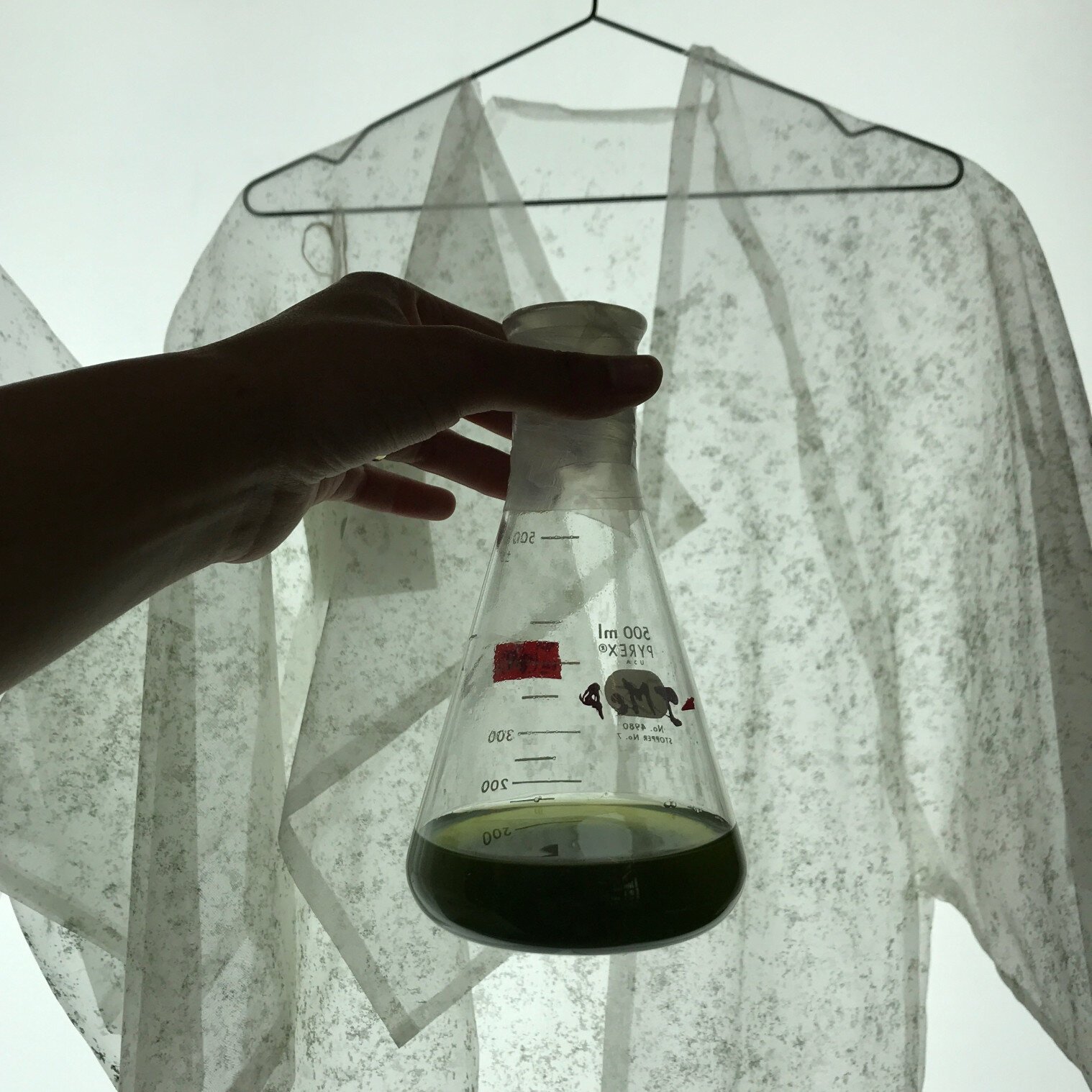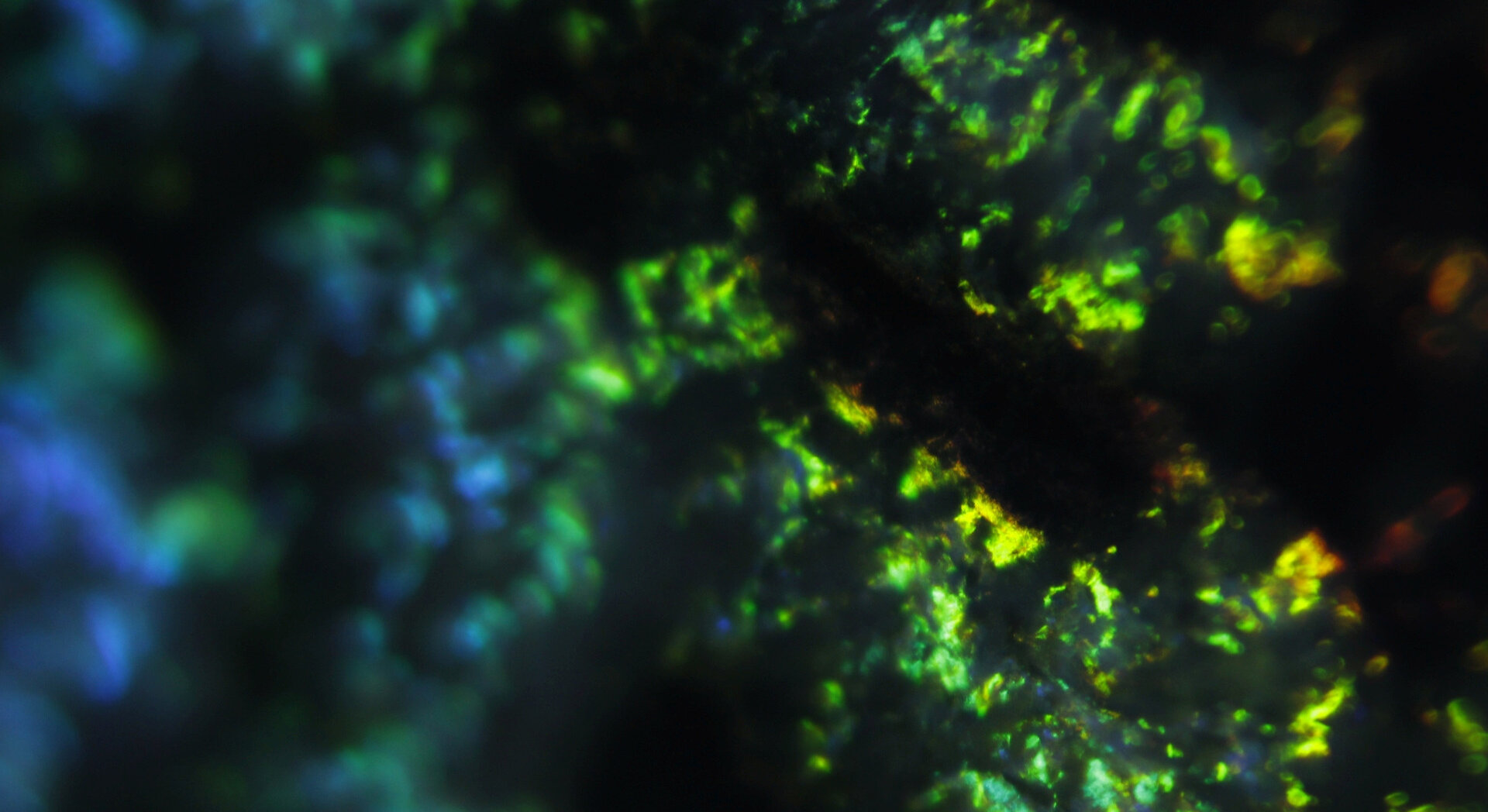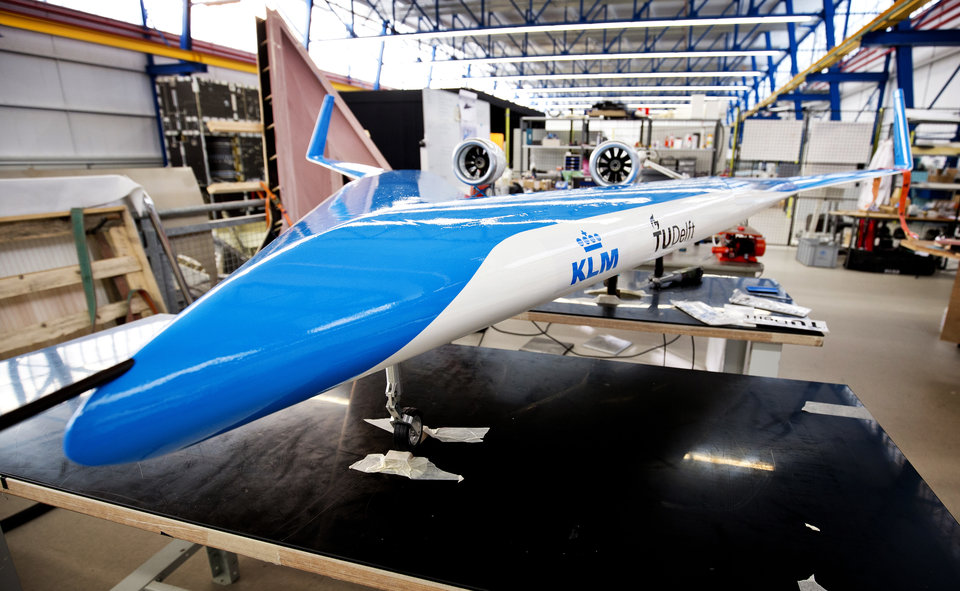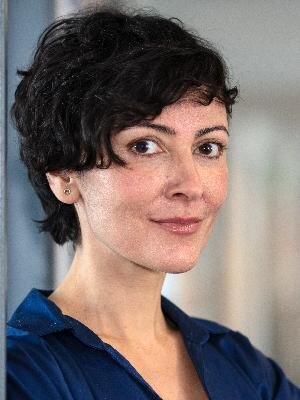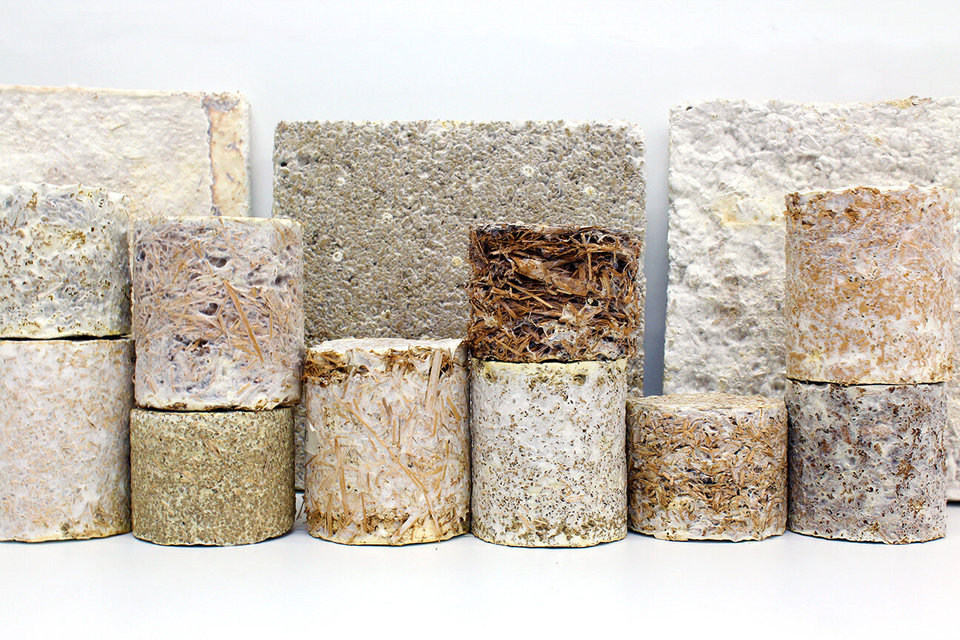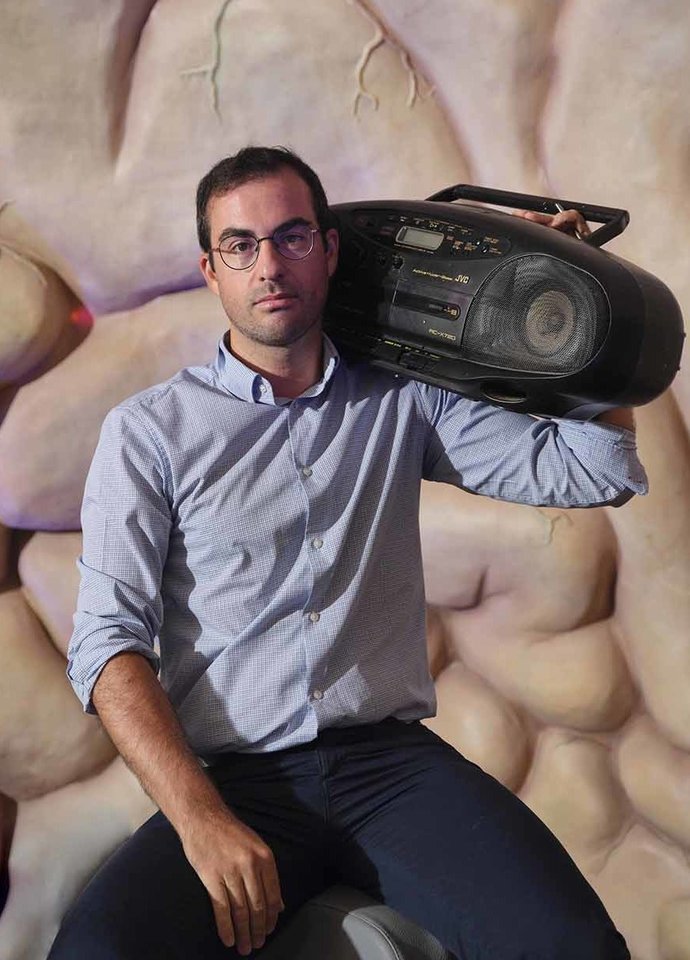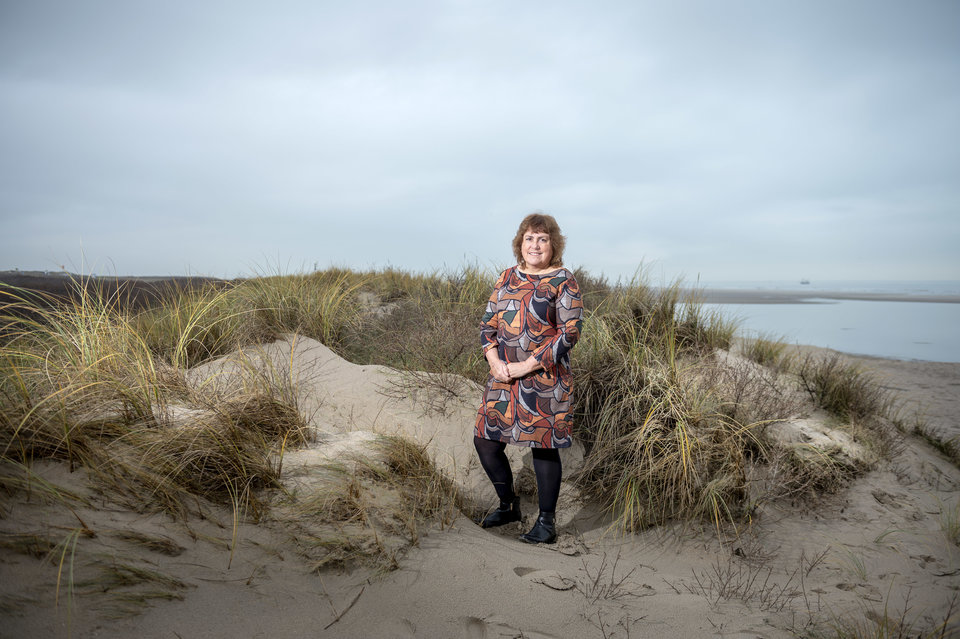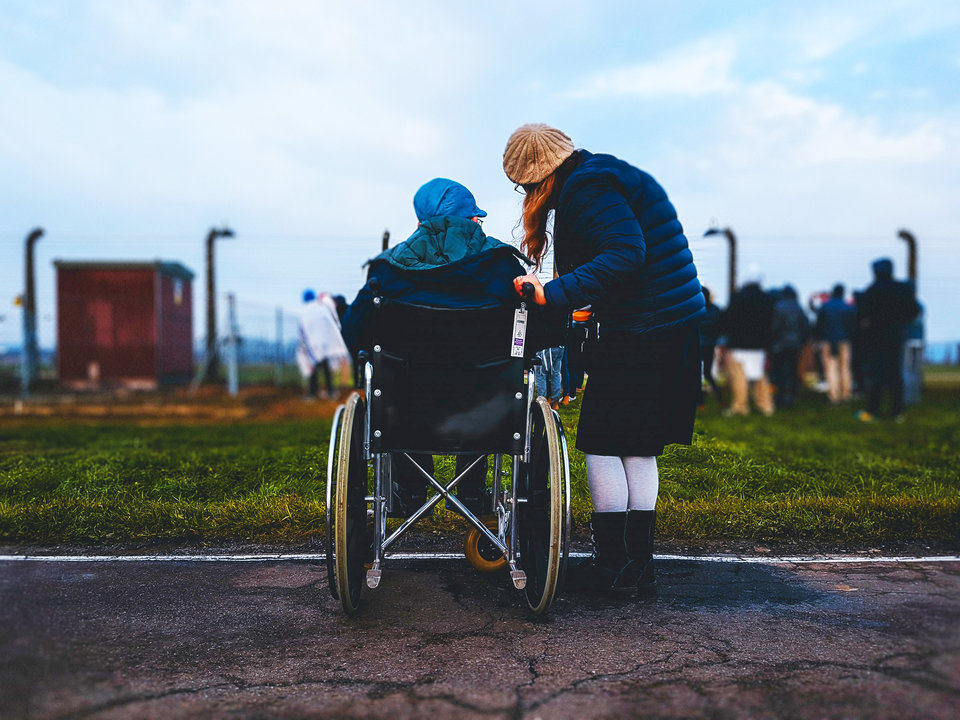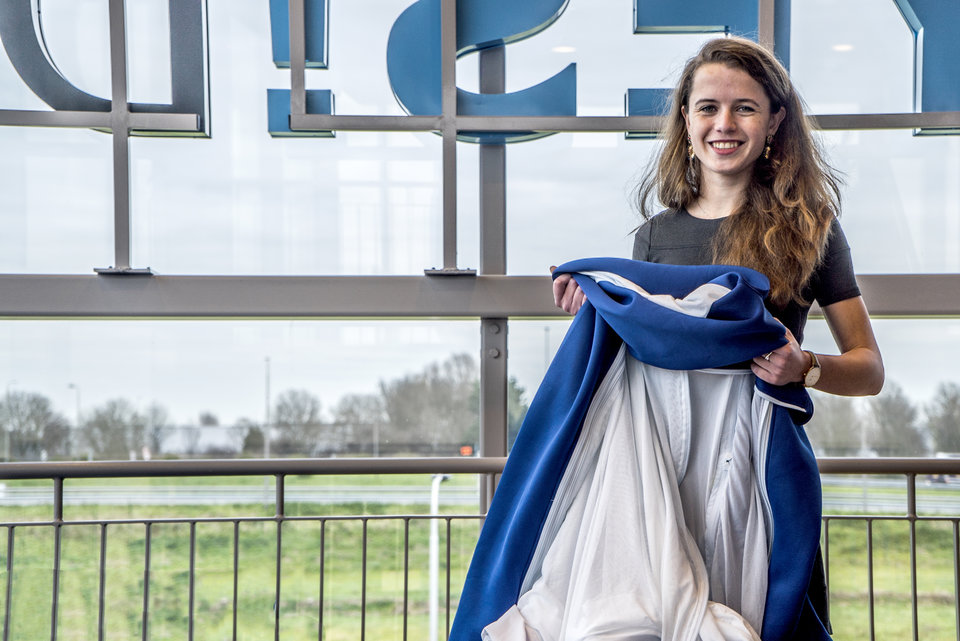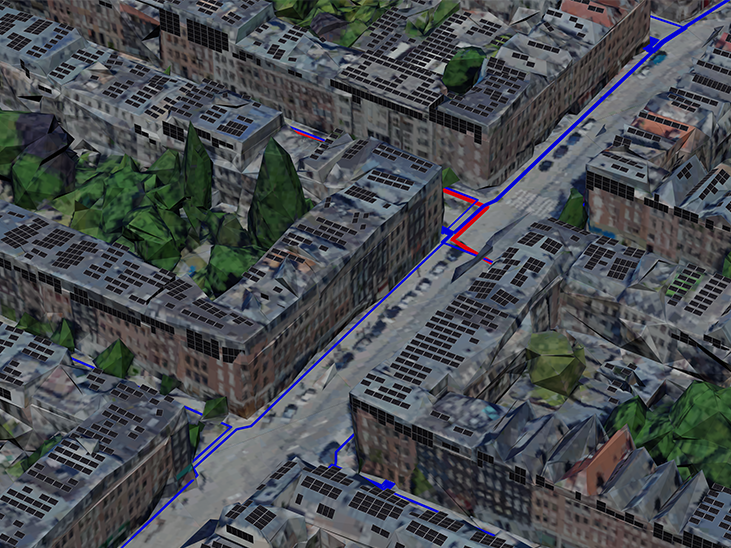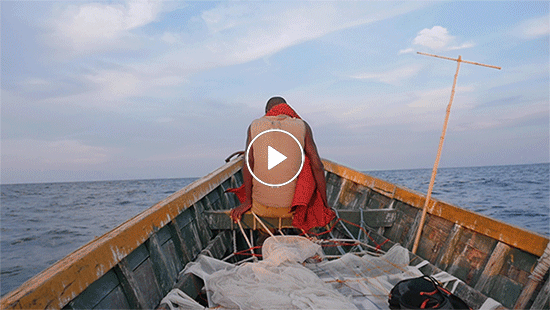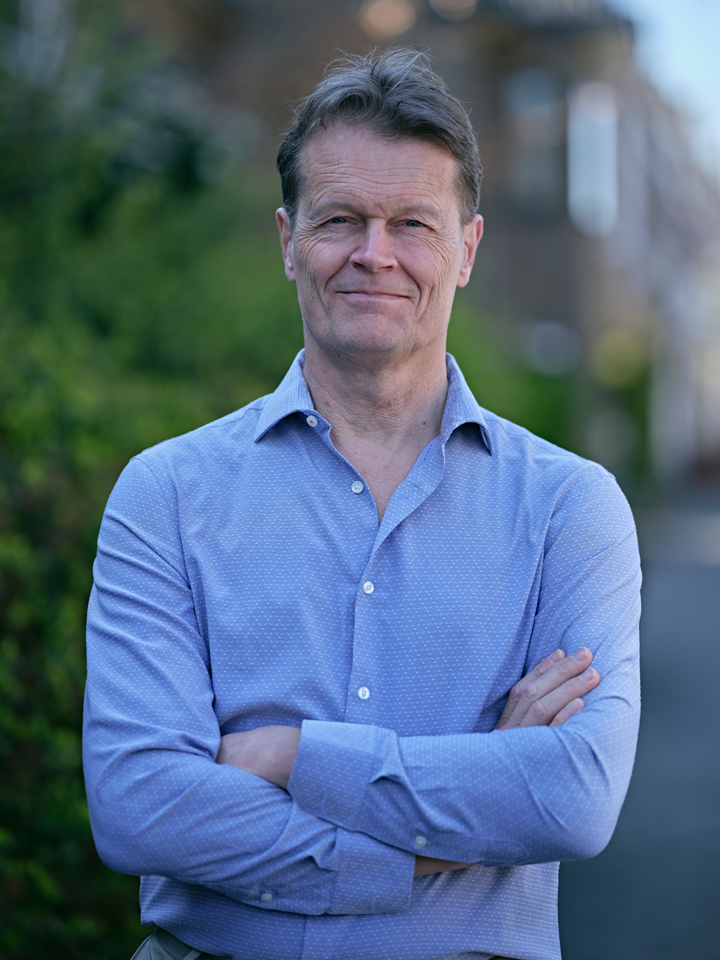Imagine a future in which our materials can morph. Your crisp white cotton shirt has been replaced by a living textile that purifies the air around you. As you settle down on the sofa to enjoy some wine, the glass bottle of yesteryear has been superseded by a tactile mycelium packaging which you can peel off to pour. And no need to switch on the light: bioluminescent organisms in your lamp set to work as light levels dropped, creating a warm evening glow.
This is not science fiction. New materials incorporating living organisms such as algae and bacteria, and the everyday products made with these materials, already offer alternatives to commonly-used materials which threaten our health, economy and environmental biodiversity such as plastic. Calls for a more bio-based and circular economy are increasing. Challenges such as climate change, CO2 emissions and the scarcity of fossil materials require novel material solutions. Elvin Karana, associate professor at the Faculty of Industrial Design Engineering (IDE) at TU Delft, whose team explores the potential of designing living products, sums up the challenge when she says: “The world of design is in need of new and innovative materials, with new possibilities for interaction and cleaner production models.”
Having always been fascinated by bio-based materials and their potential in design, Karana has spent the last fifteen years investigating the complex nature of human experience with materials. “I remember lecturing in a materials course with my colleague Dr. Valentina Rognoli, in her course at Politecnico di Milano in 2013. She mentioned an American-based company, Ecovative, that offered grow your own mycelium kits. In the same year, I ordered dozens of kits for my master’s course, Material Driven Design - at IDE at TU Delft. The idea of growing a new product instead of building it was mesmerising. I was curious as to what students could come up with.”
Since then, Elvin has developed theories, tools and methods to incorporate this thinking into the (materials) design process. Initially she focused on more conventional bio-based alternatives, such as bio-plastics and natural-fibre composites. Then a collaborative project (2015-2018) with Professor Han Wösten (microbiologist, Utrecht University) and the designer Maurizio Montalti gave Elvin the chance to continue exploring the potential of mycelium-based materials for product design. “The cross-fertilisation of biology with design offers new sustainable ways of fabrication, as well as previously unseen forms of expression in design: co-creation between humans and living organisms such as algae, fungi, bacteria and plants.”
Since 2018, Elvin Karana has been leading a three-year alliance between Avans University of Applied Sciences, Willem de Kooning Academy and TU Delft to establish a new bio-design lab where creatives are free to explore the potential of living organisms for the production of artefacts. Dubbed the Material Incubator (MI), the lab is located on the extensive complex of AKV|St. Joost Art Academy in Den Bosch. It offers a spacious and inspirational environment for designers to prototype large-scale research artefacts using living and growing biological materials.
Live and let live
Karana and her team asked themselves what would happen if - instead of killing living organisms (like algae, plants, bacteria and mycelium) at the end of the design process - they kept them alive? In other words, what if they were allowed to flourish as part of everyday products? Karana believes that such an approach would lead to designing everyday products with novel responsive behaviours and functions. But more than that, using living materials also suggests new ways of thinking and doing in design - working together with nature.
Take the Performative Light Project by Bahareh Barati, a post doc researcher at TU Delft. In this project, Dr. Barati and the MSc graduate Tim van Dortmont explored the light-giving qualities of microorganisms in response to human interaction. They investigated the flash characteristics of a specific strain of bioluminescent algae called Pyrocystis fusiformis. A shaking device designed to research different shaking movements - such as rotation, pulse and vibration - allowed the researchers to map the input to the luminescent output. Karana recounts: “A group of design students from our Prototyping with/for Emerging Materials course then developed two interactive products with bioluminescent organisms as alternative ways of illuminating our world, with no need for an external energy supply.”
Cross-fertilisation
To explore living materials, an interesting mix of disciplines - artists, designers and scientists - work together as equals in a common lab space. They discuss ideas, discover, develop and explore the application of biomaterials and living organisms that can help us make the transition to a world in which bio-design has found a way forward - even if it may be a long way off.
“Artists and designers are often visitors in science labs, where scientists hold the ultimate power in the material’s development,” reflects Karana. “Scientists push the boundaries; utmost attention is given to the specification of materials in order to improve performance. Biodesign research offers a parallel track to the established techniques in materials design. In my team, we believe that materials offer more when designers are allowed to play with them freely. Working with an applied university where creatives explore bio-based materials gives me the opportunity to explore the applicability of my work in a broader sense.”
“As a TU Delft scientist, I am used to thinking systematically and developing tools and methods to support designers. Commercial applications are not the end goal in design research. But artists and designers are more accustomed to keeping their (material) design ideas and concepts to themselves as commercial opportunities, which can make collaborating a challenging process." says Karana. “On the other hand, artists and designers bring a critical perspective to the process of materials development and design research, by asking meta level questions, like: Why is this material needed? What is its purpose? What does it mean for society and for ecology? There are no clear answers, but designers can discover different possibilities for materials which are not always foreseen or expected by science. I love to be able to bring all these perspectives together as a researcher.”
Biomaterials for the dead
Why such a collaborative approach is needed was demonstrated several years ago by a bioplastic company who wanted to change the industry application of their material from packaging products to coffins. Karana explains: “Their bioplastic coffin application would break down after six months underground. When we consider its function, the material application made perfect sense. Yet, nobody wanted to buy a bioplastic coffin. It did not align with user expectation and experience: in other words, what people think, feel and do in this particular context of burials I supported the company with design research, to get to the bottom of the resistance to such a concept.”
Cuddly fungi and watering textiles
What are the results of this creative science collaboration? Elvin eyes light up: "We have a number of exciting projects. The therapeutic application of fungi in the healthcare sector for instance. Understanding that stroking and touching has been proven to have a calming effect for patients, designer and researcher Wasabii Ng is currently investigating the tactile properties of mycelium-based materials. She created a number of prototypes of 'cuddly fungi' in different organic shapes and textures.” With this experiment, Ng demonstrates the positive qualities of a fungi-based material, in contrast to the usual negative connotations of fungi as something dirty and harmful to human health.
Another surprising result tackles pollution in the manufacture of clothing - one of the most polluting industries in the world. Taking into account the CO2 emissions released during production and transport, the large amount of water used in growing the raw materials, and the immense amount of waste generated during manufacture and end of life, the (fast) fashion industry has a massive impact on our environment and culture. A possible answer is the Biogarmentry: Living Textiles project by Roya Aghighi, together with Dr. Srikkanth Balasubramanian from Dr. Marie-Eve Aubin Tam’s group (TNW). In collaboration with the Canadian athletic clothing company Lululemon Athletica Inc, the researchers developed a photosynthetic living textile with microalgae, observing their growth and the way they create or change patterns through time as an indication of their livingness and eventually, their end of life. The lifecycle of the living textile directly depends on how it is cared for. Just like a plant, you have to water this textile in order to keep it alive”, Karana explains.
Living with our products
If the future is indeed to be one in which mycelium is the chosen packaging material, or one in which your clothes are made of a living textile, and your lamp is lit with the help of bioluminescent micro-organisms, it is important to know how consumers might react. How can design affect the way people think and feel about such materials? The fact that we will actually live with bacteria as products or packaging, asks for new ways of interacting with materials.
“I believe in the coming years, design research will increasingly direct its attention to living materials that can sense, respond, adapt and eventually die. This requires a fundamental change in the way we understand materials in design. It might take a long time before new bio-based living materials are widely accepted by society, but these materials will have an impact and will change our ways of living. I want to support the design of this transition,” Karana concludes. “If science, art and design work together in projects where the biological process is integrated into the design thinking and vice versa, we can bring this future closer.
What is Elvin’s own favorite living material? “Right now it would be Flavobacteria, which create structural colour (SC). Here, nanostructures interact with incident light to reflect intense hues. The best examples of SC are found in nature, like the colours of peacock feathers. Currently, my collaborator Dr. Colin Ingham (Hoekmine BV) is the leading scientist in the field and capable of understanding the genetics of these bacteria. Hoekmine has demonstrated structural colour’s preservation in dried or epoxy-resin embedded forms, while retaining their colour to create bacterially derived structural colour (BDSC). We will soon explore ways to control the behavior of flavobacteria and investigate their scalability for industrial applications. We hope they will offer alternative ways of colouring our daily artefacts, reducing the burden on nature. We will grow colour on artefacts. What an incredible idea.”

